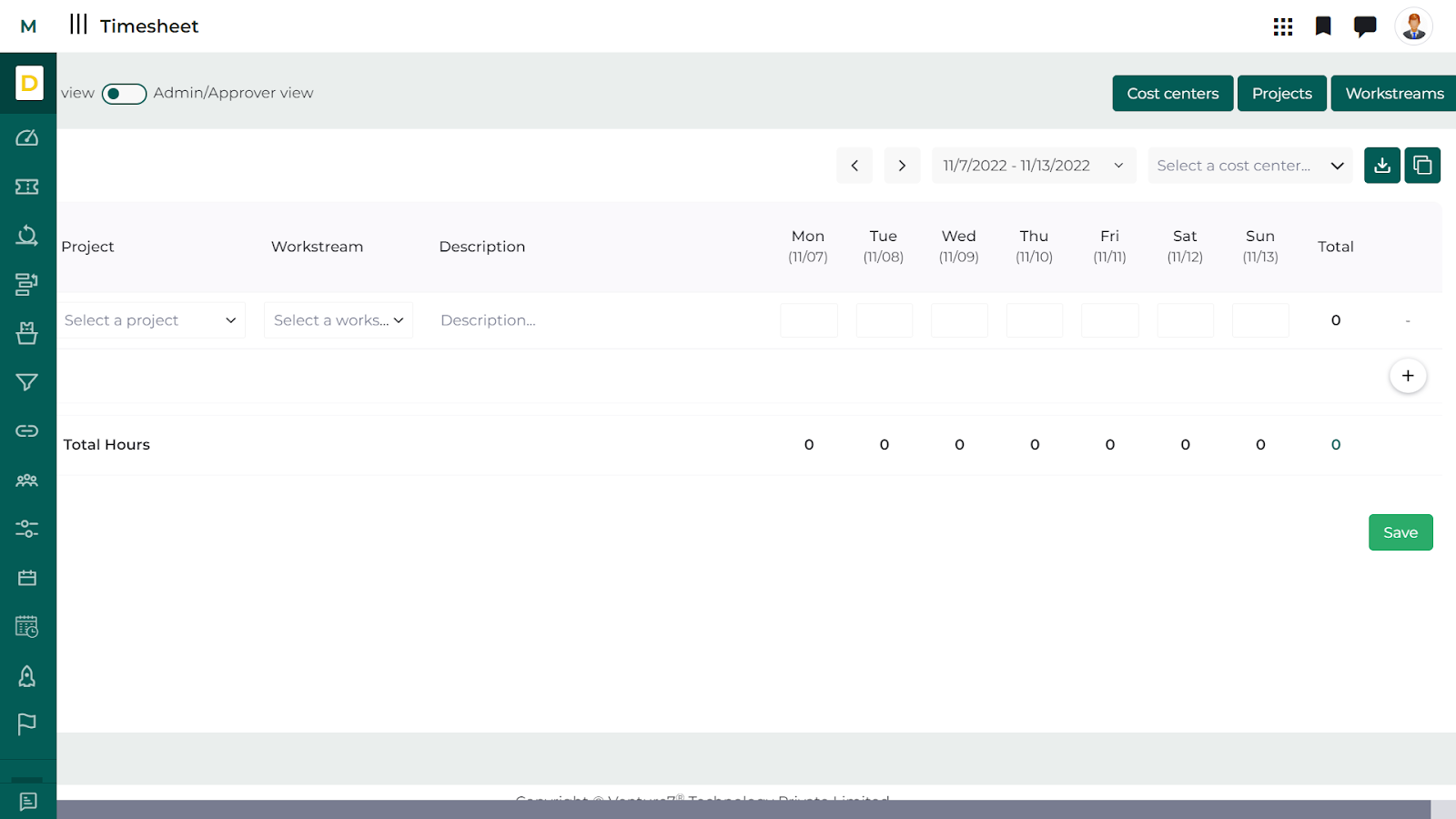Why And How Timesheet Tool Helps Management?
A timesheet tool helps management by providing a way to track the hours worked by employees and contractors. This can be particularly useful in industries where billing clients based on the number of hours worked is common, such as in consulting or professional services. The tool allows managers to see how much time is being spent on different projects, which can be useful in terms of project budgeting and ensuring that resources are being used effectively.
The timesheet tool allows employees and contractors to log their hours worked, which can then be approved or rejected by managers or supervisors. This provides a clear record of the time spent on each project, which can be used for billing, payroll, and performance evaluations.
Additionally, some timesheet tools can also be integrated with other project management tools, such as project scheduling and task management software, allowing managers to better understand the time spent on each task and how it contributes to the project. This can help managers to optimize the workflow, identify issues or delays, and make better decisions.
Another benefit of the timesheet tool is that it also allows managers to gain insight into employee productivity and identify areas where employees may need additional training or resources. This can help improve employee engagement and productivity, as well as overall team performance.
In summary, the timesheet tool can help management by providing accurate and up-to-date information on employee hours worked, which can be used to improve project budgeting, performance evaluations, and employee productivity. In addition, it also helps with billing, payroll, and project management optimization.
Features of the Time Tracking tool
A timesheet tool can have a variety of features, depending on the specific product. Some common features include:
-
Time tracking: The ability for employees and contractors to log their hours worked, including start and end times, and breaks taken.
-
Approval workflow: A system for managers or supervisors to approve or reject time entries, providing a clear record of hours worked.
-
Project tracking: The ability to link time entries to specific projects or tasks, allowing managers to see how much time is being spent on different projects.
-
Reports and analytics: The ability to generate reports on hours worked, such as by employee, project, or department, as well as advanced analytics to monitor the trends and find insights.
-
Payroll integration: The ability to integrate with payroll systems, allowing managers to easily transfer hours worked information for payroll processing.
-
Billing integration: The ability to integrate with billing systems, allowing managers to easily bill clients based on the hours worked.
-
Mobile app: A mobile app version of the tool, allowing employees and contractors to log hours on the go.
-
Customizable fields: The ability to add custom fields, such as task, location, or department, to better categorize and sort the hours worked data.
-
Notifications: Automated notifications for different events, such as time entries submitted, approved, or rejected.
-
Integration with other project management tools: Ability to integrate with other tools such as project scheduling, task management, or project management software, to get a better understanding of the time spent on each task, and how it contributes to the project.
-
Timesheet automation: smart rules or the use of AI to automate the process of filling out the timesheet to reduce errors and improve data quality.
-
Multi-language support: to adapt to different employees' or contractors’ needs and locations.
These are just some examples of features that a timesheet tool may offer. It is important to evaluate the different options available to determine which features align with your organization's specific needs.
Some timesheet tracking tool
- VReli: A user-friendly web-based timesheet tool that is easy to use, and comes with advanced reporting, search, filter, and project tracking. It's a SaaS application and is very affordable for small, and medium scale industries. Easy to set up and people can start using in minutes.
-
Toggl: A simple and user-friendly tool that offers time tracking, project tracking, and reporting features. It has a free plan available and offers a mobile app version to track time on the go.
-
Harvest: A time tracking tool that offers project and task tracking, time reporting, and invoicing. It's easy to use and suitable for both small and large teams.
-
Timecamp: A time tracking and project management tool that allows managers to set budgets and track time and expenses. It also includes detailed reports and integration with other tools such as Trello or Asana.
-
ClickTime: A web-based time tracking tool that offers project and task tracking, time reporting, and integration with other tools such as QuickBooks. It's suitable for small and large teams, with different pricing plans available.
-
Time Doctor: A time tracking tool that provides detailed time and productivity reports, and project management features and integrates with other tools such as Asana and Trello. It's specially designed for remote teams and offers different plans to fit every team size.
These are some popular time-tracking tools available in the market, and each of them has their own set of features and pricing plans. It's important to evaluate the different options available and choose the one that best aligns with your organization's specific needs.
.




